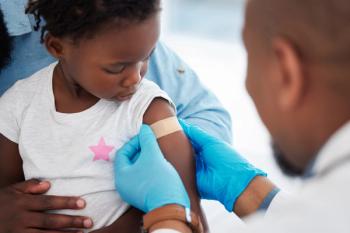
Olivia Kim-McManus, MD, discusses genetic testing, therapy in pediatric neurology
In this interview from the 2025 Child Neurology Society meeting, Olivia Kim-McManus explains how far the gene therapy and genetic testing space has come related to pediatric neurology.
At the
Kim-McManus credited session chair Dr. Peter Kang, MD, FCNS, CNS president, as well as fellow panelists Andrea Gropman, FAAP, FACMG, FANA, FAAN, FCNS, William Dobbins, MD, and Anne O’Donnell-Luria, MD, PhD, for shaping a conversation that traced “the historical arc of genetics in the space of pediatric neurology.” She noted that the panel began by reviewing “how things changed within the neuromuscular space with antisense oligonucleotides, and how it’s impacted the ability to really focus targeted treatments for children.”
While the panel covered multiple therapeutic areas, Kim-McManus brought an epilepsy-focused perspective.
“My background is in epilepsy, and so I was speaking on targeted therapeutics on multiple layers — from the molecular to the network level — and really fine-tuning how we can provide a personalized medicine approach for our children with epilepsy, including antisense oligonucleotides in clinical trials,” she said. “I see children with intractable epilepsy that are uncontrolled despite standard medications, and that’s oftentimes due to a genetic etiology,” Kim-McManus explained.
Access to testing, she emphasized, remains foundational, stating "This is where it’s really important to have the ability to have access to genetic testing and provide an opportunity to give a diagnosis so that there can be tailored approaches based on that diagnosis.”
Selecting therapies based on genetic findings is becoming increasingly important, she noted, and acknowledged the broader challenges in integrating precision medicine into the space overall.
“Certain medications, mechanistically, can exacerbate or be more ideal for a certain diagnosis,” she said. “And along those lines, it informs those opportunities for design of new, novel therapeutics that are interventional, including gene therapies or genetic therapies."
“We’re so excited about the wave and the ongoing flood of activity in this space,” she said, calling it “a very exciting time in neurology and pediatric neurology.” But she also warned: “Some of the challenges have been equitable access, of course, to diagnostics, because that is the basis of this whole concept of being able to tailor a therapeutic based on your genetic diagnoses.”
Reference:
Kim-McManus O. A Pathway from Genetic Diagnosis to Targeted Genetic Therapy. Session. Presented at: 2025 Child Neurology Society Annual Meeting. October 8-11, 2025. Charlotte, North Carolina.
Newsletter
Access practical, evidence-based guidance to support better care for our youngest patients. Join our email list for the latest clinical updates.










